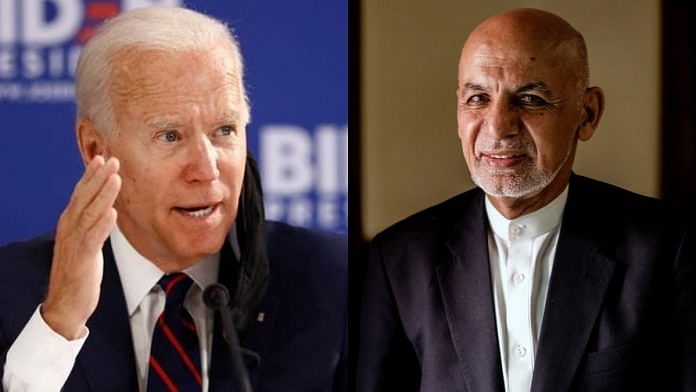London/Afghanistan: President Joe Biden is under pressure to decide whether to abide by an Afghanistan peace deal reached in Donald Trump’s final year aimed at bringing the 2,500 troops left in the country home after almost two decades of war.
The challenge is pulling it off without leaving the Taliban poised to retake power.
Secretary of State Antony Blinken bluntly told Afghanistan’s president in a recent letter to accelerate peace talks with the Taliban, saying he should “understand the urgency of my tone.” But with Taliban-led violence continuing to destabilize Afghanistan, Biden may have little choice but to extend the drawdown timeline to ensure President Ashraf Ghani’s government doesn’t become a casualty of the withdrawal.
Biden “is in a bind,” said Madiha Afzal, a Rubenstein Fellow at the Brookings Institution. “If we leave on May 1, violence between the Taliban and Kabul will certainly increase, and Afghanistan will devolve into some state of protracted violence. If we stay, the Taliban will start attacking American troops again and Biden will be saddled with the blame of just having lengthened America’s longest war.”
The question of troop levels in Afghanistan has vexed U.S. presidents since American forces were sent to oust the Taliban government in late 2001 after it refused to hand over al-Qaeda leader Osama bin Laden. The American military presence has surged, contracted and surged again as successive U.S. presidents have reevaluated what’s possible in the war-ravaged nation. None could figure out how to leave.
A deal reached last year provided the opportunity to wind down the U.S. role, but on condition that violence declined and the government and Taliban entered productive peace talks. That process dragged out, but the Trump administration stuck with it. The Taliban, on the cusp of seeing foreign forces depart, held off on attacking Americans.
Even though the Trump administration set May 1 as a target to have all U.S. forces out, that date was widely seen as aspirational and likely to fail. And although the White House and the Pentagon have avoided committing publicly to either a full withdrawal or extension, logistical deadlines are just weeks away.
“If they haven’t taken significant steps to leave by April 1 then we’re in a range where it becomes logistically untenable,” said Adam Weinstein, a veteran of the Afghanistan war who is now a research fellow at the Quincy Institute for Responsible Statecraft in Washington. “The logistical burden is not only getting the troops out but also all of the sensitive equipment out of the country.”
Despite last year’s accord, the security situation in Afghanistan is worsening. Violence has climbed since the peace talks started in September of last year, including targeted killings of journalists, civil society members and politicians. In 2020, 8,820 Afghan civilians were killed or wounded, according to the UN. The latest attack last week killed three members of a local media organization in eastern Jalalabad.
“If the Taliban are confirmed as not meeting their commitments, which I personally believe they’re not, then we may have to reconsider the May 1st deadline,” said Democratic Senator Bob Menendez, the chairman of the Foreign Relations Committee. “You can’t enter into a peace agreement where one side is largely meeting its obligations, the other is not, and then expect it to work out well.”
America’s efforts to build up Afghanistan’s civilian institutions also look fragile. The Taliban are now more powerful than at any time since they were ousted in 2001, despite almost $1 trillion in spending over the last two decades. By last September, the U.S. had spent $945 billion on the conflict between military and reconstruction costs, according to the U.S. Special Inspector General for Afghanistan Reconstruction, a Pentagon-based independent watchdog.
A quick and clean exit has big political appeal. It would satisfy Biden’s campaign pledge to end “forever wars” and quiet voices in Congress demanding an end to the costly conflict no matter what the conditions. It would also represent a decisive break with the decades-long reasoning that just a few more months of American boots on the ground might be enough to change the fate of Afghanistan.
But withdrawing too quickly risks the possibility that the Taliban seizes power, erasing even the modest achievements won after 20 years of conflict.
“Pulling out by May 1 would be a huge mistake,” said David S. Sedney, a former deputy assistant secretary of defense for Afghanistan, Pakistan and Central Asia who recently stepped down as president of the American University of Afghanistan. “The Taliban are clearly not interested in peace. They’re interested in victory either on the battlefield or in talks.”
The return of the Taliban or of civil war also runs the risk of denting American prestige just as the U.S. seeks to gears up for what Biden has described as “extreme competition” with China.
“The Chinese will be looking at how effective the United States is everywhere in the world, said Sedney, who also served as deputy chief of mission at the U.S. Embassy in Beijing. “If the United States is pulling down and downsizing, then the Chinese will find ways to take advantage of that. So the idea that somehow you ignore parts of the world in order to focus on China is an inherent misunderstanding of how great-power relations work.”- Bloomberg
Also read: US returns to South Asia pushing peace in Afghanistan, stability in India-Pakistan



